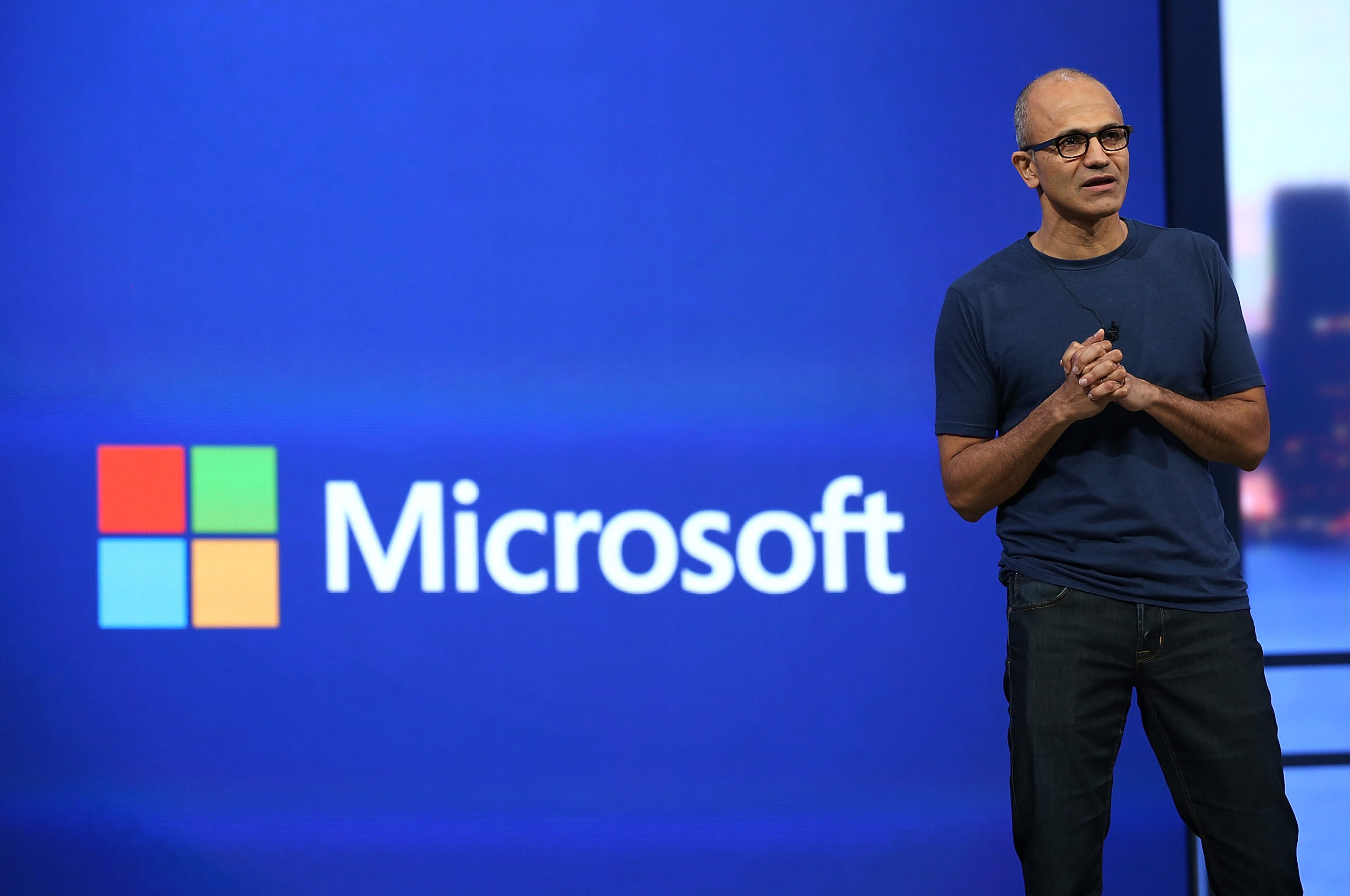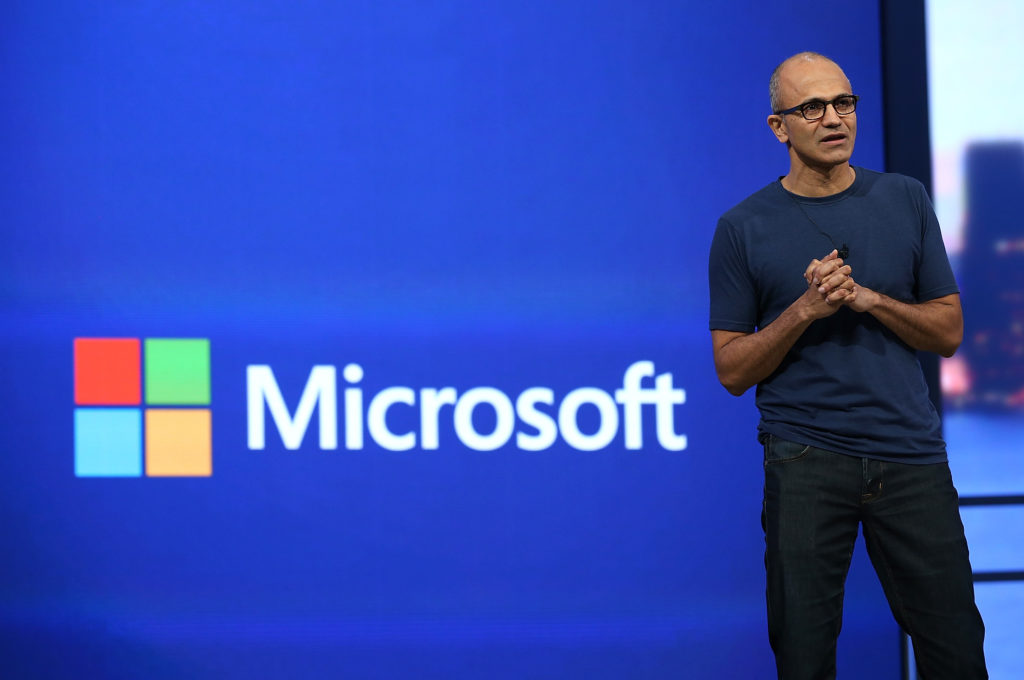To grasp the magnitude of Microsoft’s $11 billion quarterly cloud revenue, consider this: that total matches the combined quarterly cloud revenue of four of the world’s largest cloud players—Salesforce (about $3.1 billion), SAP ($1.9 billion), Oracle (probably about $1.5 billion) and IBM ($4.7 billion).
Many factors are of course at play in that breakaway performance by Microsoft. I’ve laid out some of them in Why Microsoft’s Beating Amazon: Cloud Deals with SAP, Oracle and ServiceNow and also in Why Microsoft Is #1 in the Cloud: 10 Ways It’s Getting Bigger, Stronger, Better.
But if I had to pick one dominant factor for Microsoft’s blowout success in the cloud, it would be the company’s unconditional commitment to customer success, a movement inspired and led by CEO Satya Nadella.
In the company’s press release announcing its fiscal-Q4 results, Nadella wasted no time in emphasizing the not-so-secret secret sauce behind the company’s runaway performance.
Nadella’s very first comment, located in the second paragraph of the release, was this:
“It was a record fiscal year for Microsoft, a result of our deep partnerships with leading companies in every industry,” said Satya Nadella, chief executive officer of Microsoft. “Every day we work alongside our customers to help them build their own digital capability – innovating with them, creating new businesses with them, and earning their trust. This commitment to our customers’ success is resulting in larger, multi-year commercial cloud agreements and growing momentum across every layer of our technology stack.”
Now, I guess it’s possible that Microsoft doesn’t really do any of the things Nadella mentions: “partnerships with leading companies in every industry” and “work alongside our customers” and “innovating with them, creating new businesses with them, and earning their trust.” And I guess it’s also possible that Microsoft’s unparalleled success in the cloud—its ability to match the cloud revenue of the four superb enterprise-tech companies noted above—is just a quirky coincidence.
And if you believe that, then I have some 25-year-old legacy systems I’d like to sell you at 300% of their original list price.
Here are a few examples of the big-picture approaches Microsoft is taking across the board from advanced products and services, to how it goes to market and works in innovative ways customers and with its ecosystem, to new alliances with other big tech vendors.
Leadership in Technology
From AI to ML to a new breed of enterprise apps (Dynamics 365 revenue grew 45% in the quarter) to GitHub and a revamped approach to cybersecurity and beyond, Microsoft’s become a world-class technology player for the enterprise. On top of that, it’s been a leader in hybrid-cloud technology and philosophy for several years, and deserves kudos for being brutally candid about multiple steps it’s taking to boost Azure’s 99.995% reliability. (You can read all about that in my piece from earlier this week, After 3 Cloud Failures in 12 Months, Microsoft Fortifies Azure Reliability.)
Leadership in Go-to-Market Strategy and Programs
This part of any company’s cloud business doesn’t get nearly the visibility that all the acronym-heavy tech stuff does. But it has clearly been a huge strategic differentiator for Microsoft.
And you can sense the commitment to that innovation in engagement from the language used by Nadella in the excerpt from above. He steps beyond the sterile language most tech-company CEOs cling to and speaks somewhat joyfully about the innovation and success and collaboration that can be unleashed when cloud vendors get out of the tech-industry bubble and instead immerse themselves and their capabilities in driving success and growth for customers.
For example:

Microsoft has flipped the old vendor/reseller model where the vendor makes stuff and the partners sell it. In Microsoft’s new approach, its sales team sells sophisticated solutions developed by its channel partners, complementing the old model.
It has executed a similar 360-degree flip with customers. Microsoft’s created a brilliant program wherein corporate customers who create powerful solutions around Azure can now, with the help of Microsoft’s sales team, sell those solutions to other businesses. No doubt some other tech vendors either have or are considering similar programs—and if they exist, I’d love to hear about them. But as far as I know, Microsoft’s the only one doing this.
And that’s where true digital differentiation comes in. For the past couple of years, Nadella has been emphasizing that as every business becomes a software business, then it becomes incumbent on big cloud vendors like Microsoft to give customers the tools and capabilities they need to become software creators themselves.
As an echo of that unique perspective, look at Nadella’s language from above where he talks about “partnerships” with customers and the need to “work alongside our customers” and to be “innovating with them” and “creating new businesses with them.”
If you think that’s just a lot of PR fluff, then I’ll say with respect that you couldn’t be more wrong. And the ultimate proof is that $11 billion in quarterly cloud revenue.
Leadership in Industry Partnerships—Sometimes with Bitter Rivals
Look at the tie-ups Microsoft has forged or strengthened recently:
Azure’s become the leading hyperscale platform for big global corporations looking to move their SAP workloads to the cloud;
the ultimate lone wolf, Oracle, has agreed to a “cloud interconnect” deal with Microsoft and by all accounts has done so eagerly and enthusiastically—a feat no company but Microsoft has ever been able to achieve with Oracle;
Microsoft has paired up with high-flying ServiceNow to offer its digital-workflow solutions to regulated industries and government agencies; and
just the other day, Microsoft and AT&T forged a big partnership around networking in the cloud.
Final Thought
Microsoft got out ahead of almost every other cloud vendor in making the customer the center of its cloud strategy and approach. While they were doing that, many of the other top cloud companies looked at the cloud stuff they’d made or bought and tried to make that the thing everyone should care about.
The enterprise cloud, in the midst of one of greatest growth markets the tech industry or any other industry has ever seen, is fast becoming the business-technology platform for the digital age. At the same time, customers are demanding that those hotshot cloud vendors focus less on their wondrous code and more on the very pressing and urgent needs of those businesses.
And #1 Microsoft’s recognition of that new reality is one of the top reasons that its quarterly revenue now matches that of #3 Salesforce, #4 SAP, #5 Oracle, and #6 IBM.
That’s a big lesson that every cloud vendor better take very much to heart.
Subscribe to the Cloud Wars Newsletter for in-depth analysis of the major cloud vendors from the perspective of business customers. It’s free, it’s exclusive, and it’s great!








